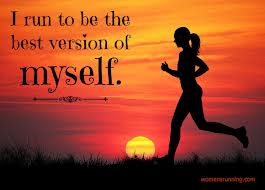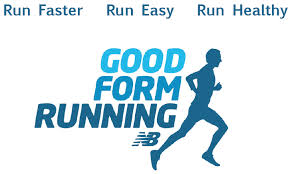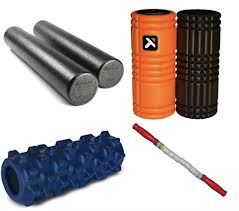After running injury-free for nearly 5 years, I am now in the trenches with my first ailment. I am beginning to wonder if I’ll ever get back to having no twinges of pain, while doing my beloved sport. I am hopeful though!
Back in December, Christmas Day to be exact {which is how I recall the day so well}; I felt the first twinge in my left knee. It really didn’t bother me too much until stopping after the Shamrock Half finish line in March. So for the last 6-ish weeks, I’ve really been trying to gauge the significance of this ache. Two weeks ago, I had pain while running. This was new. All of the previous discomfort had come at the completion of runs…. not during. I decided it was time to see someone, so I finally made an appointment with Jim Browning, owner of Injury Solutions & Sports Performance. He is the local ART Elite Provider & amongst the running community, I been told he’s referred to as “Magic Hands”. In our 2 sessions thus far, the focus has changed from a possible IT Band injury, to being more located in the hamstring region. Regardless of the injury, I am baby-ing my body, in hopes I will return to my care-free, injury-free self very soon.

This injury has taught me a few lessons though, mostly about form & injury prevention. I’m simply getting back to the basics. And it should be noted that I certainly am not getting any younger! I have been vigorously combing though any & all running magazines, asking local running professionals & friends, & making mental notes—all related to “what can I do to get better AND stay better??”. Elaborated upon here, I will attempt to provide you with some knowledge & tips that I learned/revisited. Hopefully, I can help you to become an improved/more efficient/faster runner, as well as prevent injuries. Of course this is advice that I am taking to heart, not necessarily what will work for you. Current research, such as it is in everyday life, can support or refute most topics of conversation (i.e. forefoot vs. midfoot strike; eat Paleo vs. gluten-free; etc.). If your form needs “fixing”, give it a whirl; if not, simply enjoy the next few paragraphs.
Form:
- ARMS/HANDS – Arms close to your sides with shoulder blades squeezed (not so tight that you expend unnecessary energy) as if they’re “cracking a nut”. Arms pumping to help propel you forward down the road/track/trail. You should not be able to visualize your fists. Speaking of fists, your hands should not be clenched—try to envision that a potato chip, which you don’t want to break, is gentle placed between your thumb & pointer finger. Now run in that position.
- FEET – Mid-foot is the strike I am attempting to accomplish. As recommended by my local running store guru, I really need to get away from my default heel-striking. Just maybe, it is worsening my knee problems. I am trialing running with Newton’s to correct this form flaw.
- CADENCE – Attempt to strike the ground with at least 180 steps per minute. I have no idea where I personally am at with this measurement; but thanks to still wearing my original Garmin watch, it just might be time for an upgrade to the 220 or 620 model.
- BREATHING – IN through the nose & OUT through the mouth. Keep the mouth slightly open while running to facilitate proper breathing technique. Don’t stare at the ground when you run—you certainly don’t want to trip & fall as you pass that handsome runner (wo)man in your neighborhood!
- CORE – Keep your core (mid-section) tight with a tall & strong posture. I’ve incorporated extra plank time & other ab exercises into my daily routine. If you don’t have time for ab work, simply laugh more throughout the day!

Injury Prevention:
- FOAM ROLLING – At the top of my “getting better” regimen is to foam roll daily. Certainly I have missed a few days, but not on run days. I have fitted in my foam rolling directly after my run, during nighttime TV, during my children’s meal time, etc. Many videos are available on YouTube that can help with proper form & technique. I purchased my foam roller on Amazon for under $40.
- STRETCHING – Because I am super flexible, getting a good stretch is sometimes difficult. For this reason, I think my injury is rooted in poorly stretched muscles. This is where my ART Elite Provider & massage therapy have come into play! I am also planning to implement yoga into my Richmond Marathon training plan.
- EPSOM SALT BATHS – What mother (or father, or any runner for that matter!) doesn’t deserve a bath after a hard day’s work?! Although I have only indulged in one of these during these past weeks of healing & recovery, I can certainly see the benefits!
- HYDRATING – This is a no brainer, theoretically speaking. In reality though, most people do not drink enough water. The average Joe needs 8-8oz. glasses of WATER per day…. I’ll do the math for you; it’s 64oz. Add in a hard & sweaty workout, you need to increase your liquid intake (no, not in the form of beer or wine!).
- MAGNESIUM INTAKE – I will start by saying that I am neither a Nutritionist nor Physician, so I am not recommending a supplement for you to take; merely imparting information. I have read & have been told about the muscle relaxing benefits of increasing your magnesium intake. Magnesium is readily available in common everyday food items, such a green leafy vegetables, nuts, cereals, & fruits. According to an article from Dr. Oz in 2012, 68-75% of Americans are magnesium deficient. Many supplements are available in your local vitamin aisle, some of which incorporate Vitamin D (another thing many Americans are deficient in) into the Magnesium-Calcium supplement. Something to consider & think about when training for your next race!
- REST – This means different things to different people. For me, rest is no intervals, hill training, or tempo running. Due to my 24-hour shifts at work, by default I get 3 complete no running days during every 2 week period. The days I am post-call (defined as the day after working all night & sleeping all that next morning), I may or may not run in the afternoon. When the NICU is busy & I am exhausted, I can easily rest 6 out of 14 days during the 2-week period. Hence, for me rest-running-days = easy-running-days. For some people though, rest day means NO running & NO physically exerting activity.

I hope you have enjoyed reading & can put some of these tips to daily use! Happy Running!!
Are there any “tried & true” tips you abide by to stay injury-free? Any form pointers?
Leave a Reply